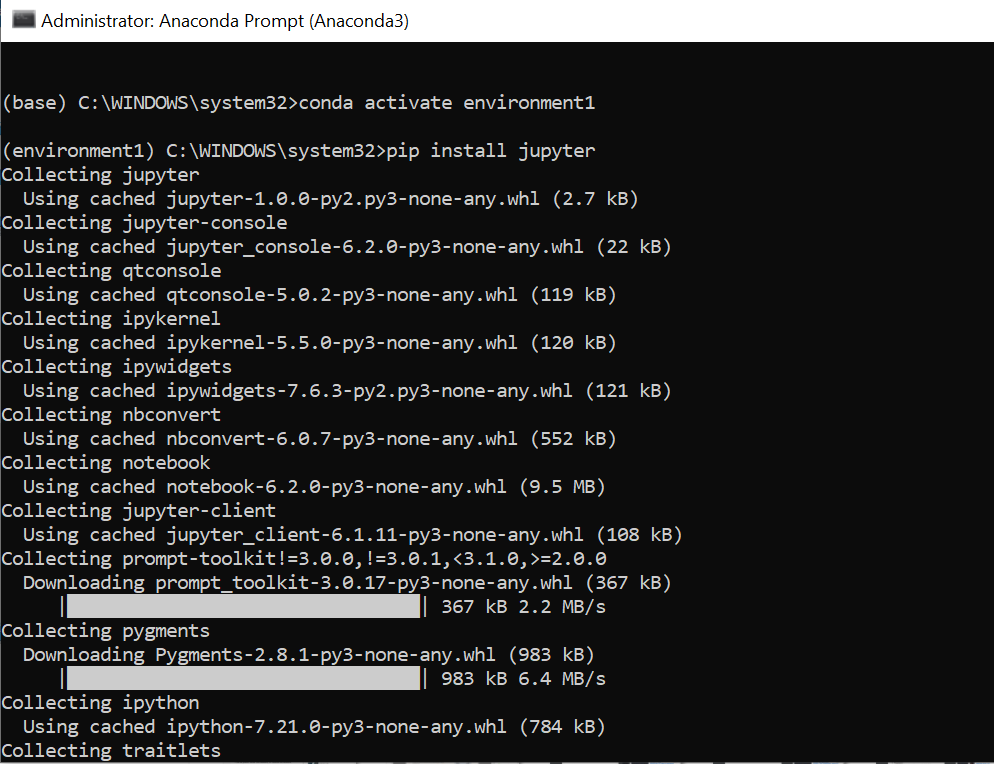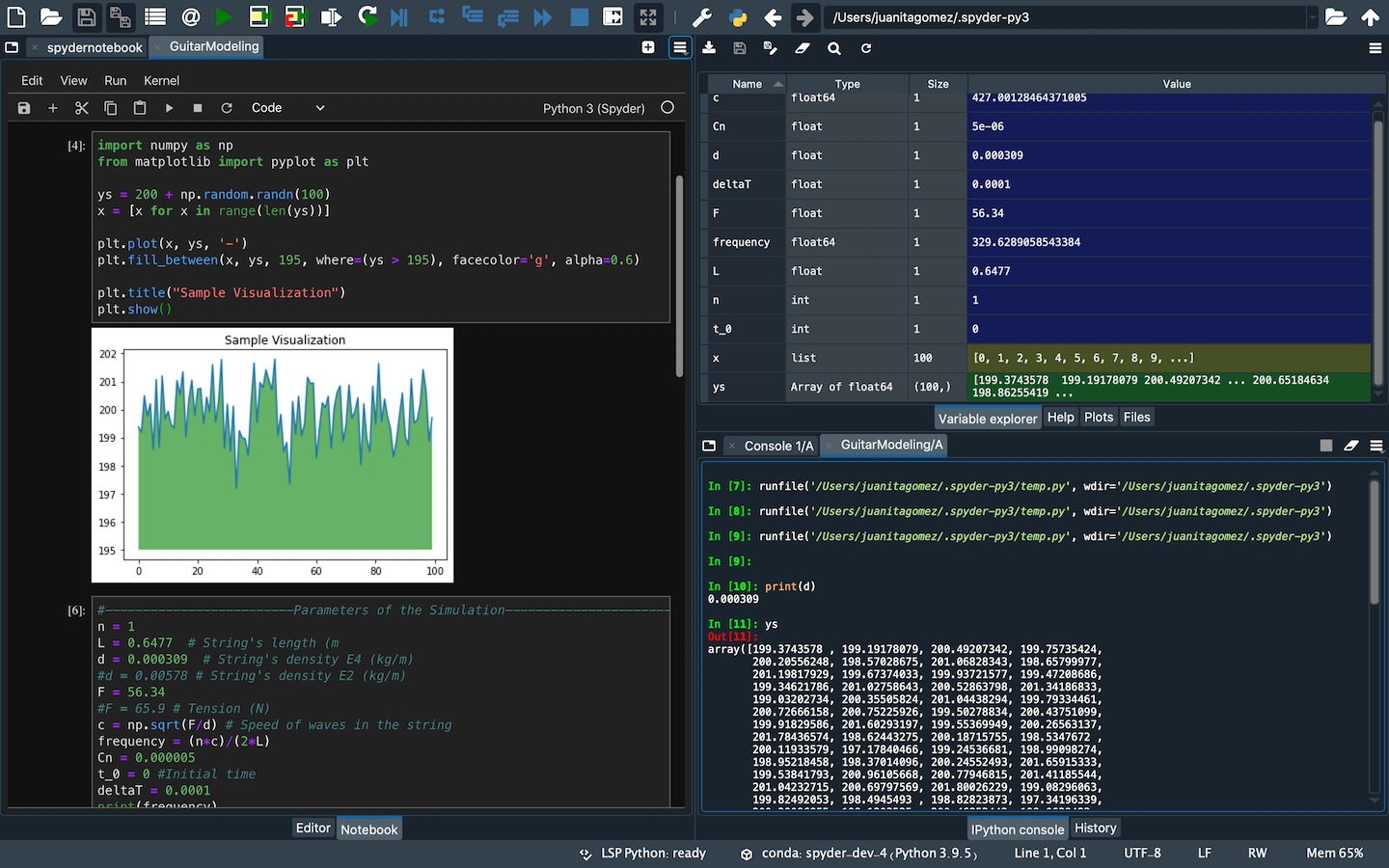

- #How to install jupyter notebook in command prompt software#
- #How to install jupyter notebook in command prompt code#
- #How to install jupyter notebook in command prompt windows#
#How to install jupyter notebook in command prompt code#
“The Jupyter Notebook combines three components:n”, “n”, “* The notebook web application: An interactive web application for writing and running code interactively and authoring notebook documents. What is the basic elements of a Jupyter notebook? ipynb notebook document available from a public URL can be shared via the Jupyter Notebook Viewer. Notebooks may be exported to a range of static formats, including HTML (for example, for blog posts), reStructuredText, LaTeX, PDF, and slide shows, via the nbconvert command. When you are in Command mode, you can edit your notebook but you can’t type in the cells.

You will see grey border around the cell with blue left margin. To enter the COMMAND mode press ESC or click anywhere outside the cell. An operating mode that causes the computer or modem to accept commands for execution. Type “cmd” and then press Ctrl+Shift+Enter to open an administrator Command Prompt. Type “cmd” and then click “OK” to open a regular Command Prompt.

What is the command for entering command mode? 2 (default, Jun 20 2012, 16:23:33) Type “copyright”, “credits” or “license” for more information. You start IPython by typing “ipython” in your terminal. As an existing Python user, you may wish to install Jupyter using Python’s package manager, pip, instead of Anaconda. x, which included the parts that later became Jupyter, was the last version to support Python 3.2 and 2.6. Jupyter installation requires Python 3.3 or greater, or Python 2.7. To run the program, type python Hello.py and hit Enter. Type dir and you should see the file Hello.py. It should take you to the PythonPrograms folder. You will see a python version and now you can run your program there. Open Command Prompt and type “python” and hit enter.
#How to install jupyter notebook in command prompt windows#
The error is caused when Python’s executable file is not found in an environment variable as a result of the Python command in the Windows command prompt. The “Python is not recognized as an internal or external command” error is encountered in the command prompt of Windows. With Jupyter Notebook integration available in P圜harm, you can easily edit, execute, and debug notebook source code and examine execution outputs including stream data, images, and other media. ipynb and you should see some green text that tells you your notebook is running. If you switch back to the dashboard, you will see the new file Untitled. Your first Jupyter Notebook will open in new tab - each notebook uses its own tab because you can open multiple notebooks simultaneously. How do I know if a Jupyter Notebook is running? If you have security software, try turning it off temporarily, and look in the settings for a more long-term solution.
#How to install jupyter notebook in command prompt software#
Some internet security software can interfere with Jupyter. Try disabling any browser extensions and/or any Jupyter extensions you have installed. Jupyter doesn’t load or doesn’t work in the browser How do I run a Jupyter notebook from command line? – Related Questions Why can’t I open a Jupyter notebook?

You can enter command mode by pressing Esc or using the mouse to click outside a cell’s editor area. The keyboard is mapped to a set of shortcuts that let you perform notebook and cell actions efficiently. What is Jupyter command mode? In command mode, we can edit the notebook as a whole, but not type into individual cells. PY file? To run Python scripts with the python command, you need to open a command-line and type in the word python, or python3 if you have both versions, followed by the path to your script, just like this: $ python3 hello.py Hello World!


 0 kommentar(er)
0 kommentar(er)
